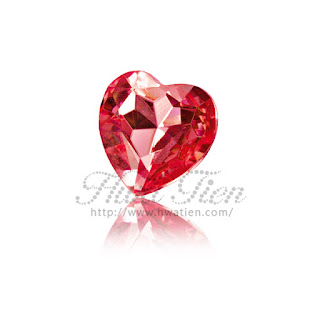
International auction house Phillips will return to the Mandarin Oriental for a preview of its fall auctions from November 23 to 26, offering a curated series of contemporary art, design, jewellery and watches.
Ahead of the Christmas gifting season, Terry Chu, Head of Jewellery Asia, offers an expert guide on how to identify the best of the best when it comes to collecting fine jewellery in every colour.
Ruby
Ruby is the king of all gemstones. Famous for its vibrant red hue, rubies are particularly popular in Asia for its colour's auspicious connotation in Chinese culture.
Thermal treated natural rubies are common, while natural rubies spared of thermal treatment—which still possess beautiful colour and clarity—are extremely rare. Even specialists can't identify all rubies by observation, which is why testing with a trusted gemological lab is often recommended.
Diamond

In its purest form, a diamond should appear colourless and its quality is determined based on the four Cs—colour, clarity, cut and carat weight. Colourless diamond grading starts from D (colourless) to Z (light yellow), and each colour grade represents a very subtle difference in hue.
One or two colour grade deviations can't be recognized by the untrained eye, particularly when mounted. Therefore, diamond jewellery such as necklaces are often composed of diamonds of three to five varying grades. To match diamonds of exact quality is no easy feat, and always incurs a premium in the price.
Yellow is one of the most common colours to appear in natural diamonds, and depending on saturation and tone, the rating for yellow diamonds ranges from "Fancy Light" to "Fancy Vivid Yellow".

The value of a coloured diamond is calculated by price per carat, and there is at least a 50% price difference between each colour grade.
Aside from green diamonds, Emeralds are one of the most sought-after green gemstones. And as far as provenance goes, emeralds sourced in Colombia are considered to be of the highest quality thanks to their rich, saturated blue-green colour. Clarity treatment to improve the visual beauty and stability of emeralds is very common and has been an established practice for centuries.
This astonishing 19.90-carat emerald on offer at Phillips, completely spared of oil treatment and endowed with excellent clarity, is an extremely rare find in the market and a true gift from Mother Nature.
Jadeite jade has strong ties to Chinese culture and can appear in several colours including red, yellow, purple and black, although green jadeite is the most precious. When buying jadeite, the intensity and purity of the colour, plus translucency and texture, determine its value.This astonishing 19.90-carat emerald on offer at Phillips, completely spared of oil treatment and endowed with excellent clarity, is an extremely rare find in the market and a true gift from Mother Nature.
Jade
Traditionally, jadeite cabochons, beads and bangles are highly sought after as they often require large, high-quality roughs. Nowadays, jadeite jewellery has become more versatile for daily life.
Sapphire
There is no better way to learn how to spot top-quality stones than to see the actual works of art in person and speak with a specialist. Visit Phillips' "Jewels and Jadeite" public viewing at the Mandarin Oriental from November 23 to 26, where a stunning collection of rare and fine jewels will be on display.
Discover more on phillips.com












Thanks for sharing this interesting piece of information. Golden wedding ring bands are classy and beautiful. And you can make them prettier by adding a diamond solitaire, which will enahnce your personal style. When you visit the Divine Solitaires website, you can explore more diamond rings in different designs.
ReplyDeleteSolitaire Wedding jewellery